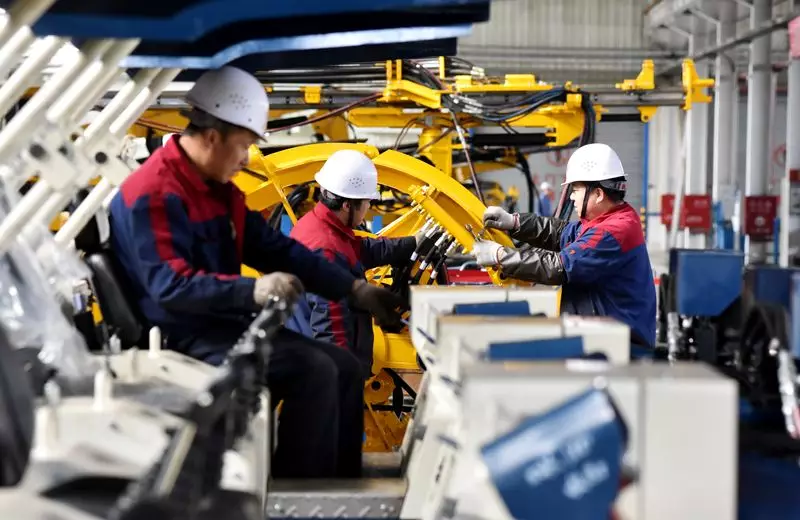China’s economy, a cornerstone of global trade and manufacturing, continues to show signs of a complex recovery. According to the National Bureau of Statistics (NBS), industrial output surged by 5.4% year-on-year in November, slightly higher than the 5.3% growth witnessed in October. This uptick surpasses analysts’ expectations, indicating that the manufacturing sector remains robust even as the country grapples with external pressures and domestic challenges.
In stark contrast, retail sales figures reveal a troubling narrative. With only a modest growth of 3.3% in November, compared to 4.8% in October and a forecast of 4.6%, consumer spending appears to be lagging. Despite government incentives and notable online shopping events aimed at spurring consumer activity, these efforts have not translated into the anticipated growth. This divergence between industrial performance and retail activity highlights the fragile state of domestic consumption and raises concerns about the sustainability of China’s economic momentum.
The disappointing retail sales data underscores the urgency for the Chinese government to implement more aggressive stimulus measures. At the recent Central Economic Work Conference (CEWC), China’s leadership emphasized the need to bolster domestic demand by increasing the budget deficit and issuing more debt. Such measures suggest a pivot towards a looser monetary policy, marking a significant shift in economic strategy after more than a decade of stringent financial management.
Officials, including NBS spokesperson Fu Linghui, maintain that the broader trend toward recovery remains intact. However, the pressure is mounting on policymakers to instigate tangible improvements in consumer confidence. Despite some incremental successes, particularly in the real estate sector, it’s evident that a comprehensive recovery remains elusive, hampered by long-standing issues, particularly in the property market.
Property Market Woes and Consumer Confidence
China’s property crisis has cast a long shadow over the economy, with household savings predominantly tied up in real estate investments. As government efforts to stabilize home prices have begun yielding results—evidenced by a slowdown in the decline of new home prices—confidence among consumers remains fragile. Analysts caution that while recent initiatives, such as reduced mortgage rates and incentives for homebuyers, have the potential to stimulate the market, a definitive recovery in real estate is still on the horizon.
The interconnectedness of the property sector with broader economic stability means that improvements here are critical for regaining consumer trust. Policymakers are acutely aware that a resurgence in consumer spending is necessary to support sustainable economic growth, yet the route to this recovery is fraught with uncertainties.
Looking ahead, the economic landscape is further complicated by geopolitical tensions, particularly with the impending second term of the Trump administration in the United States. With threats of increased tariffs on Chinese goods, predicted to exceed 60%, the specter of external economic pressures looms large. Economists have highlighted the need for China to reaffirm its growth target, estimated at around 5.0% for the coming year, thus underscoring the importance of internal demand as a counterbalance to these external shocks.
China’s approach may also involve strategic currency adjustments, with discussions around allowing the yuan to weaken to mitigate the impact of tariffs on exports. However, recent communications from state media suggest that maintaining currency stability remains a priority for Chinese authorities, indicating a delicate balancing act between immediate economic interests and long-term financial stability.
China’s current economic climate, characterized by a mixture of positive and negative indicators, poses significant challenges and opportunities for policymakers. The pressure to stimulate domestic consumption amidst external uncertainties reinforces the need for adaptive strategies that promote sustained growth. As the government prepares to maneuver through this complex landscape, proactive and targeted economic policies will be vital in fostering resilience within both the industrial and consumer sectors. The road ahead requires not only a focus on recovery but also a robust framework to withstand potential global economic shocks, ensuring that China remains a pivotal player in the global market for years to come.

